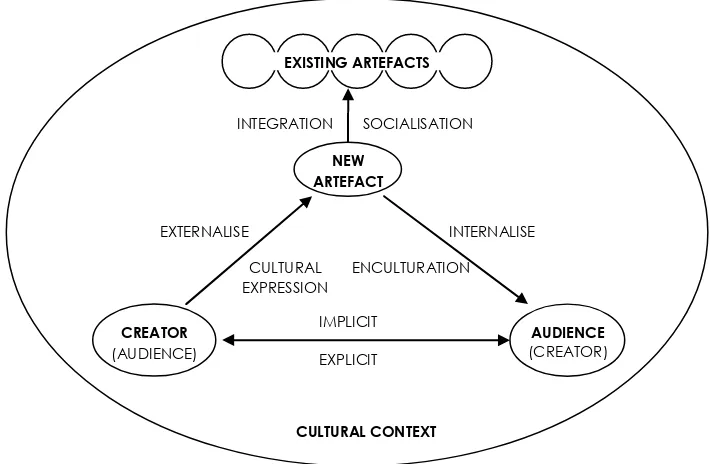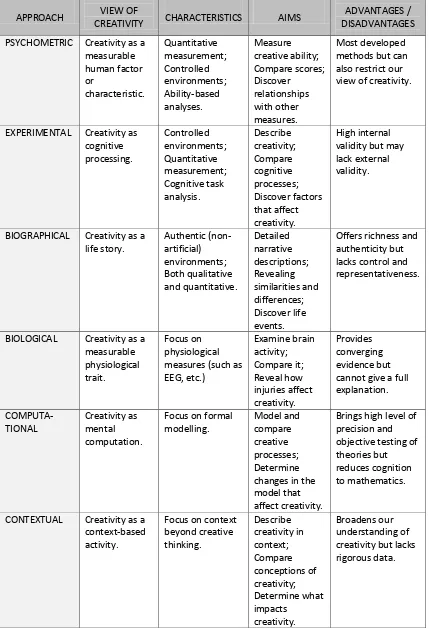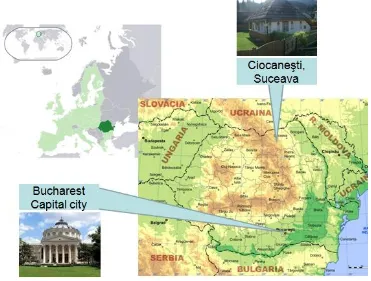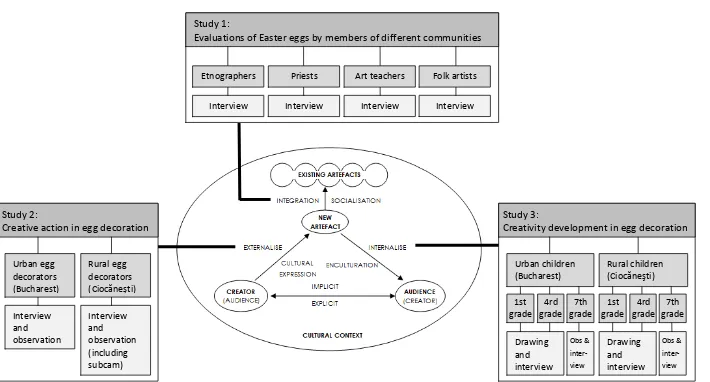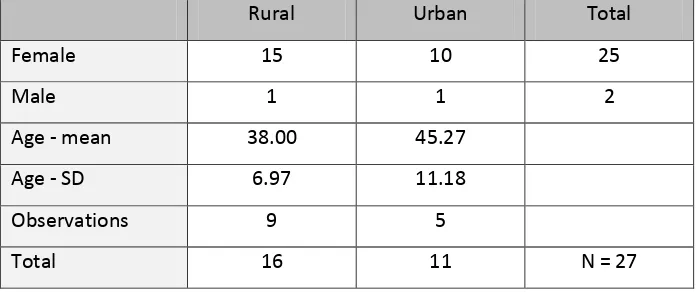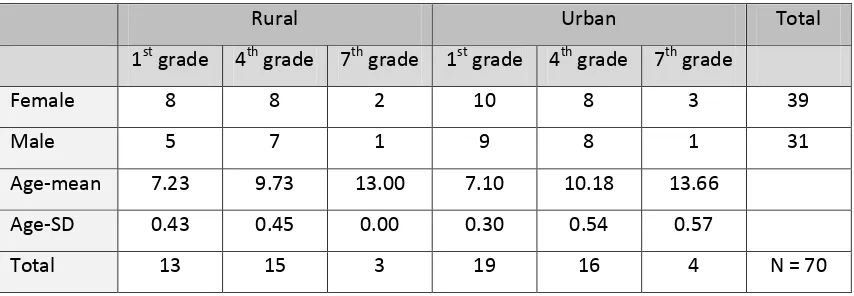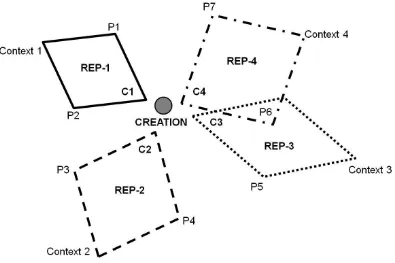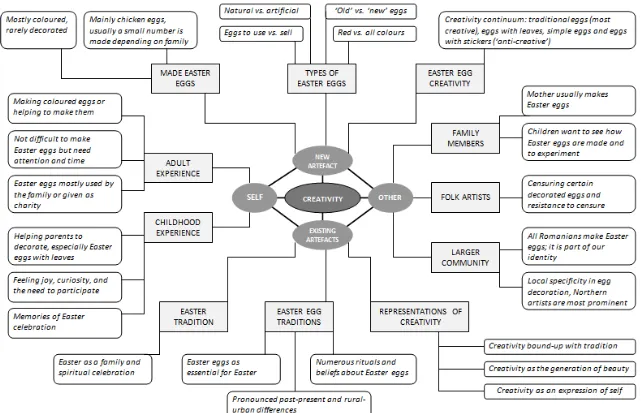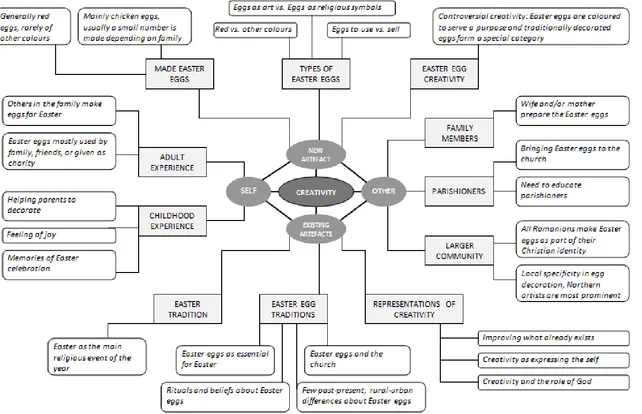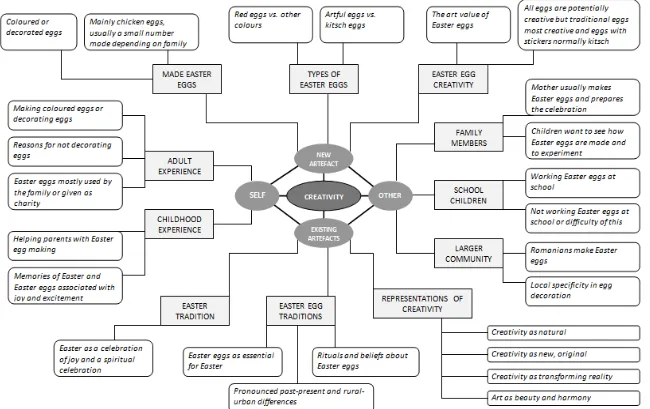The London School of Economics and Political Science
Creativity and Culture
:
Towards a Cultural Psychology of Creativity in Folk Art
Vlad Petre Glăveanu
A thesis submitted to the Institute of Social Psychology of the
London School of Economics for the degree of Doctor of
2
Declaration
I certify that the thesis I have presented for examination for the MPhil/PhD degree
of the London School of Economics and Political Science is solely my own work other
than where I have clearly indicated that it is the work of others (in which case the
extent of any work carried out jointly by me and any other person is clearly
identified in it).
The copyright of this thesis rests with the author. Quotation from it is permitted,
provided that full acknowledgement is made. This thesis may not be reproduced
without my prior written consent.
I warrant that this authorisation does not, to the best of my belief, infringe the rights
of any third party.
I declare that my thesis consists of 98,584 words.
3
Abstract
4
Acknowledgments
Writing a doctoral thesis is a long journey but fortunately it is not a lonely one. As any other journey, it is made up of encounters that enrich not only the research but also, and most of all, the researcher. I was fortunate enough to come across very special persons during my four-year “expedition”, people who supported me along the way, shared my joys, my hopes and also my anxieties, understood my project and made me understand it better myself.
Now, at the end of this journey, I want to express my deep gratitude towards these wonderful companions and advisers, starting with my supervisor, Sandra Jovchelovitch, whose patient and stimulating guidance was invaluable for the present work. Travelling along the academic path I am also thankful for the advice and support received from Saadi Lahlou, Caroline Howarth, Ivana Marková, Derek Hook, Claudine Provencher and Lucia Garcia. As a student, this is of course a path one does not travel alone and I am particularly lucky to have met dear friends who made my time at the LSE and writing the PhD a lively and joyful task: Helen Amelia Green, Maria Brock, Jap Dhesi, Sara Belton, Rochelle Burgess, Ceren Yalcin, Mercy Nhamo, Ben Voyer, Soydan Soylu, Michael Zang, Morten Skovadal, Claudia Mollidor, Jacqueline Priego-Hernandez, Eleni Andreoulli, Mohammad Sartawi, Gordon Sammut, Max Hänska-Ahy, Roxana Bratu, Fryni Mylona, Caroline Léchot, Ana Moise. A very big thank you goes to Daniel Linehan, Jacqueline Crane, Terri-Ann FairClough, Steve Bennett, Steve Gaskell and Ly Voo for making a timely completion possible by kindly offering me all their support. And, as any voyage, this could not have started without financial means; the present research was generously funded by the Economic and Social Research Council (ESRC), Institute of Social Psychology (LSE), and Raţiu Family Foundation.
Outside of the School, my PhD journey took me also to the “field”, in this case paradoxically mostly to the mountains where the village of Ciocăneşti is located but also to the southern part of Romania, to my home-town, Bucureşti. In the former I was very fortunate to be part, for a few months, of an idyllic community whose members received me with open arms and generously shared with me their time, their values and their art. My gratitude goes in particular to Marilena Niculiţă from the Museum of the Decorated Egg and Claudia Sandu, headmaster of the local school. In Bucureşti my first encounter with the fascinating topic of folk art was facilitated by the Museum of the Romanian Peasant whose dedicated team of ethnographers helped me immensely by introducing me to the Museum’s Easter egg collections. I am also thankful to Julieta Mihăilescu, headmaster of the school where I completed part of the research. In the end, it was each and every participant in my studies that made this journey possible, all showing me the way forward, teaching me something about their world and their love for egg decoration.
5
Table of contents
Declaration ... 2
Abstract ... 3
Acknowledgments ... 4
Introduction: Creativity, culture, and craft ... 12
Aims of the research ... 12
Folk art as an object of study ... 14
Outline of the thesis ... 17
Chapter summary ... 21
1. Creativity and cultural psychology ... 22
1.1. Three paradigms of creativity theory and research ... 24
1.1.1. The He-paradigm: The lone genius ... 24
1.1.2. The I-paradigm: The creative person ... 26
1.1.3. The We-paradigm: Towards a social psychology of creativity ... 27
1.2. Creativity and cultural psychology ... 30
1.2.1. The cultural psychological approach ... 31
1.2.2. A cultural definition of creativity ... 34
1.3. Theoretical model: Creativity as a cultural act ... 35
1.3.1. Externalisation and cultural expression ... 38
1.3.2. Socialisation of the creative artefact ... 40
1.3.3. Internalisation and enculturation ... 42
1.3.4. Relations between creator and audience ... 44
1.4. Implications of the cultural psychological approach ... 46
1.4.1. Creativity as a contextual and generative process ... 47
1.4.2. New theoretical emphasis on meaning and action ... 48
1.4.3. The call for ecological research ... 49
1.5. Concluding on creativity and everyday community life ... 50
Chapter summary ... 52
2. Research context: Folk art and the creativity of everyday life ... 53
6
2.1.1. Tradition working from within creativity ... 56
2.1.2. Creativity working from within tradition ... 58
2.2. Folk art research ... 59
2.3. The case of Romanian Easter egg decoration ... 63
2.3.1. Easter eggs at the confluence between folklore, religion and art ... 63
2.3.2. Easter eggs as a craft-world in Romania ... 65
2.3.3. The mobility and diversity of tradition ... 70
2.4. Is Easter egg making creative? ... 72
Chapter summary ... 75
3. Research design and methodology ... 76
3.1. From creativity research... ... 77
3.2. ... To cultural psychology and research ... 79
3.2.1. The use of interviews ... 82
3.2.2. The use of observation and subjective cameras ... 83
3.2.3. The use of drawing ... 85
3.3. Choice of research settings ... 86
3.3.1. Bucharest: the urban setting ... 87
3.3.2. Ciocăneşti: the rural setting ... 88
3.4. Overall design ... 92
3.4.1. Study one: Creativity evaluations in Easter egg decoration ... 95
3.4.2. Study two: Creativity action in Easter egg decoration ... 97
3.4.3. Study three: Creativity development in Easter egg decoration ... 101
3.5. Assuring quality in qualitative research ... 104
3.6. Concluding thoughts on generalisability ...109
Chapter summary ...110
4. Creativity as representation: An ecology of evaluations and practices .... 111
4.1. Creativity assessment and its epistemological assumptions ... 112
4.1.1. Social representations and the construction of meaning... 113
4.2. The multiple feedback methodology ... 115
4.2.1. Aims of the method ... 117
4.2.2. Using the method ... 118
7
4.3. The creativity of decorated eggs: Applying a multiple feedback approach... 120
4.3.1. Thematic analysis of interview material... 121
4.3.2. Building thematic networks: Overview of findings ... 122
4.4. Results from multiple feedback: Creativity evaluations in context ... 132
4.4.1. The heterogeneous meaning of creativity in craft ... 133
4.4.2. The dynamic nature of cultural resources for creativity... 136
4.4.3. Self – Other relations and the life of the craft... 139
4.5. Integrating findings: Patterns of practice and evaluation ... 142
4.5.1. The view from outside ... 144
4.5.2. The view from inside ... 145
4.6. Conclusion: Final reflections on the use of multiple feedback ... 146
Chapter summary ... 147
5. Creativity as action: The microgenesis of an artistic craft ... 148
5.1. Creativity in and as action ... 148
5.1.1. John Dewey, the creativity theorist ... 151
5.2. The study of action: Analytical procedures ... 154
5.2.1. Operationalising Dewey’s conception ... 155
5.2.2. Coding filmed creative activity ... 157
5.3. Study one: Egg decoration activities in urban and rural settings ... 159
5.3.1. Urban Easter eggs: Re-enacting a yearly ritual ... 159
5.3.2. Rural Easter eggs: Keeping and perfecting an old tradition ... 164
5.3.3. Concluding remarks: Types of creative activity ... 170
5.4. Study two: Traditional egg decoration activity ... 174
5.4.1. The non-linear path of creative activity ... 174
5.4.2. Generality and specificity in craftwork ... 177
5.4.3. Expert – novice differences: Building expertise ... 181
5.5. Integrating findings: What makes egg decoration creative? ... 184
5.6. Conclusion: Final reflections on the process of externalisation ... 192
Chapter summary ... 194
6. Creativity as cultural participation: A developmental perspective ... 195
6.1. Creativity and development ... 196
8
6.2.1. On socialisation, enculturation and creativity ... 202
6.3. Analytical procedures: Coding drawings ... 204
6.4. Results: Children’s developing engagement with a creative craft ... 206
6.4.1. Different family and community contexts of decoration ... 207
6.4.2. Drawing colourful Easter eggs, from personal preference to cultural norms ... 209
6.4.3. The content of decoration, from childhood symbols to traditional motifs ... 212
6.4.4. Developing further: Case studies ... 217
6.5. Discussion: Patterns in the development of creativity and craftwork ... 220
6.6. Concluding remarks: Studying creativity and development ... 224
Chapter summary ... 226
7. Discussion: Easter egg decoration and habitual creativity ... 227
7.1. Summary of findings: Creativity and habit in craft ... 228
7.2. Theoretical difficulties: Creativity versus habit in psychology ... 233
7.3. Recovering the meaning of habitual behaviour ... 235
7.4. Defining and locating habitual creativity ... 239
7.4.1. Creativity as habitual ... 242
7.4.2. Habit, improvisation, innovation ... 244
7.4.3.On the neglect of habit and improvisation ... 249
7.5. Conclusion: Creativity in Easter egg decoration as mastery ... 251
Conclusion: Towards a cultural psychology of creativity in craft and beyond ... 257
Empirical contributions ... 257
Methodological contributions ... 260
Theoretical contributions ... 262
9
Appendices
Appendix I: Popular legends related to Easter egg decoration ... 292
Appendix II: Common uses of Easter eggs ... 296
Appendix III: Decorated eggs from different regions of Romania (Zahacinshi collection, Museum of the Romanian Peasant) ... 301
Appendix IV: Meaning of ornaments in the village of Ciocăneşti ... 303
Appendix V: Interview guides and materials ... 304
Appendix VI: Ethical forms ... 307
Appendix VII: Thematic network analysis: From codes to global themes (examples: ethnographers and art teachers) ... 309
Appendix VIII: Analysis of subjective camera recordings (examples: Niculina Nigă and Luminiţa Niculiţă) ... 318
Appendix IX: Coding of drawings ... 328
10
List of tables, figures, and images
Tables
Table 1. The craft-world of egg decoration in rural and urban settings in Romania ... 66
Table 2. Overview of creativity methodologies (after Mayer, 1999) ... 78
Table 3. Gender and age of the participants ... 96
Table 4. Gender, age of participants and number of direct observations ... 99
Table 5. Context, grade, gender and age of participants ... 103
Table 6. Creativity evaluations in the case of decorated eggs ... 143
Table 7. Coding frame for interview analysis ………...………….….. 156
Table 8. Coding frame for video analysis ………...…………...………….….. 158
Table 9. Characteristics of urban and rural egg decoration ... 171
Table 10. Urban – rural differences in Easter practices described by children ... 209
Figures Figure 1. The tetradic model of creativity as a socio-cultural-psychological process ... 36
Figure 2. The two research sites in Romania ... 86
Figure 3. Overview of research design: Participants and methods in the three studies ... 94
Figure 4. A schematic representation of the multiple feedback method ... 117
Figure 5. Thematic networks - Ethnographers ... 123
Figure 6. Thematic networks - Priests ... 126
Figure 7. Thematic networks - Art teachers ... 128
Figure 8. Thematic networks - Folk artists ... 131
Figure 9. Overall pattern: The view from outside and the view from inside ... 144
Figure 10. A model of human experience (after Dewey, 1934) ... 152
Figure 11. Decoration activity in an urban setting ... 162
Figure 12. Decoration activity in a rural setting ... 167
Figure 13. Schematic representation of urban “exploratory” creativity ... 171
Figure 14. Schematic representation of rural “combinatorial” creativity ... 172
Figure 15. A typical activity chart and its observed variations (on the “white” stage) ... 175
Figure 16. Making the same motif using two different procedures (left Marilena Niculiţă, right Niculina Nigă) ... 179
Figure 17. Drawing a main straight line on the egg (Luminiţa Niculiţă) ... 182
Figure 18. The characteristics of creative action in Easter egg decoration ... 185
11
Figure 20. Proportion of monochrome and polychrome eggs across the sample ... 211
Figure 21. Proportion of different types of decoration content across the sample ... 214
Figure 22. Making the unfamiliar familiar; 1st grade urban upper row, 1st grade rural lower row ... 222
Figure 23. Making the familiar unfamiliar; 4th grade urban upper row, 4th grade rural lower row ... 223
Figure 24. Overview of findings from the three research projects ... 229
Figure 25. Three interpenetrated forms of creativity ... 246
Figure 26. A schematic representation of mastery ... 254
Figure 27. The practice-belief dyad of creativity ... 258
Images Image 1. Decorating eggs with wax using a chişiţă (the Romanian Peasant Museum) ... 68
Image 2. Variations of the star motif (Cristina Timu) ... 70
Image 3. Eggs decorated with wax in the traditional technique (front) and eggs with wax in relief (back) (Zinici family) ... 71
Image 4. University square, Bucharest (photo available from Wikimedia Commons) ... 88
Image 5. Two fibreglass Easter eggs, the one on the right depicting Ştefan cel Mare ... 89
Image 6. View of the village of Ciocăneşti ... 90
Image 7. The first decorated house in the village (Leontina Ţăran) ... 91
Image 8. The home work space (U3) ... 161
Image 9. Making colour combinations (U2) ... 163
Image 10. Unwrapping the eggs and taking off the leaves (U1) ... 164
Image 11. A typical work space (Maria Timu)... 166
Image 12. The three stages of work and the final product (Maria Ciocan) ... 168
Image 13. “Cleaning” the wax off (Cristina Timu) ... 170
Image 14. Exploring the possibility of using leaves when colouring (U2) ... 186
Image 15. Versions of the “lost way” motif (Cristina Timu) ... 188
Image 16. A novel motif, created by Ionela Ţăran ... 191
Image 17. An Easter egg for a boy (10.U.I.M.), left, and for a girl (4.R.I.F.), right ... 212
Image 18. Figurative (2.U.I.M.), left, and geometric (2.U.IV.M.), right, wanted eggs ... 215
Image 19. Geometric home egg (5.R.I.M.), left, and geometric wanted egg (3.R.IV.F.), right .. 216
Image 20. Decorating eggs in the urban context ... 218
Image 21. Decorated eggs from the rural context ... 219
12
Introduction: Creativity, culture, and craft
Aims of the research
The present thesis has a threefold aim. Its particular interest is to explore creativity in Easter egg decoration by understanding how people attribute creative value to the craft, what makes the activity of decoration creative, and finally how the engagement with this practice develops during ontogenesis. At a higher level, these concerns relate to folk art more generally and to artistic expression as a whole. Thus, a second aim of the study is to shed light on the social and symbolic dynamics of creativity in a folk art context, hoping to inform broader conceptions about the value and significance of art for individuals, groups and communities. Last but not least, what the present research tries to achieve at the highest level is to reconnect the study of creativity with greater debates concerning the relation between continuity and change, between the “new” and the “old”, between creator and society. An important argument here is that contemporary psychology, in its study of the phenomenon, pays little if any attention to such issues and therefore loses sight of essential interrogations situated at the core of creativity as a notion and as a process. This has not been always the case however and one needs only to go back to the intellectual legacy associated with thinkers like Gabriel Tarde and James Mark Baldwin to realise that novelty emergence is central for theorising human behaviour and human society. Indeed, Tarde (1903) built up an entire system of thinking on the notions of invention and imitation, both seen as “elementary social acts” (p. 144). In his view there is no conflict between these fundamental processes, since all inventions spring from combinations of different imitations and, when successful, end up being themselves imitated. A similar perspective has been put forward by Baldwin (1903), when he referred to the link between the elementary principles of habit and accommodation. Reuniting continuity and change within the same framework is characteristic for all “genetic” orientations in psychology (see Piaget, 1950; Moscovici, 1984), sociology (see Bourdieu, 1993), and related disciplines.
13
base. And there is great scope for achieving this when it comes to a topic like creativity which is enormously complex and in need of further investigation. Considered to stand at the intersection between biology, psychology and philosophy (Barron, 1995), creativity has attracted considerable attention on the part of psychologists, resulting in different definitions (e.g. as achievement, ability, disposition, etc. see Barron & Harrington, 1981), different areas of study (by academics, policy-makers, arts educators, etc. see Banaji, Burn & Buckingham, 2006) and different paradigmatic views (mystical, psychoanalytic, pragmatic, psychometric, cognitive, and social-personality; in Sternberg & Lubart, 1999). Best approached as a “syndrome or complex” (Runco, 2007, p. xi), this phenomenon poses a series of difficulties to any scientific endeavour and can often make creativity researchers seem not to know “what they are talking about” (Amabile, 1996, p. 19). Regardless of this however, the topic itself raises continued interest, especially since creativity can be considered “an important element of the zeitgeist in the early twenty-first century, world-wide” (Craft, 2005, p. ix). Its role and significance go much deeper and relate to the very appearance and evolution of our species. In the words of Festinger (1983, p. 6), “with an animal that could and did invent, does the story [of human civilization] start”.
14
creativity and culture (as a symbolic environment and not “cultures” – sets of external variables described by cross-cultural psychology).
The last decades however have brought a regained interest in the workings of culture and its impact on the human mind (see Jahoda, 1992) and some of the most notable efforts to investigate this relationship came to constitute what is known as the discipline of cultural or socio-cultural psychology (Cole, 1996; Shweder, 1990; Valsiner & Rosa, 2007). It is precisely this socio-cultural theoretical perspective that will be employed here to conceptualise creativity and this, in itself, is not very common within psychology outside of writings dealing with collaborative activities (see John-Steiner, 1992, 1997; Littleton & Miell, 2004), mostly inspired by a Vygotskian approach. As such, the studies included in the present thesis aim both to contribute to and advance our cultural psychological understanding of creativity. And one central point of interest for cultural psychologists is represented by the dynamic of everyday and community life. It is for this reason that folk art was chosen for the following research – an excellent example of how creativity exists and is manifested not by individuals in isolation but as part of larger communities and in the context of traditional practices.
Folk art as an object of study
Art and folk art have been a favourite theme of reflection for many psychologists and philosophers in the first half of the last century. John Dewey (1934), for instance, based his philosophy of experience on a discussion of aesthetics, considering that it is an “esthetic quality that rounds out an experience into completeness and unity as emotional” (p. 43). For Dewey great works of art do not stand alone and separate from the life of the community that produced them, in opposition to current practices of glorifying high art and ignoring mundane expressions. In the end, what brings them together is the fact that works of art “like words, are literally pregnant with meaning” (p. 123), and this meaning has its origin in past experience. The societal foundations of art were of great concern for Lev Vygotsky as well, whose first psychological writing was in fact dedicated to the “Psychology of art” (1971). Vygotsky stressed the important premise that:
15
becomes personal when every one of us experiences a work of art; it becomes personal without ceasing to be social” (Vygotsky, 1971, p. 249).
For him art is therefore a thoroughly social phenomenon and this is equally valid for both “folk” and “high” art. Vygotsky strongly believed that “there is no fundamental difference between the processes of popular and individual creativity” (pp. 16-17) and, when comparing old Russian popular poetry with poems by Pushkin, he refused to conceive the “superiority” of the latter. For the narrator of popular stories too “introduces changes, cuts, additions and he reshuffles words and parts”, while every great poet “passes on the immense heritage of literary tradition” (p. 16) but does not invent it. This is a crucial observation about the relationship between art and folk art, pointing to the social and cultural substance they both share. In the words of Gardner (1982, p. 102), “the artistic achievement emerges as intensely personal and inherently social – an act that arises from the most profound levels of one’s own person and yet is directed to others in one’s culture”.
16
of familiarisation, rationalisation, and dominance) (see Bartlett, 1920b). Processes like these testify for the creative dimension of folk art and they can be considered first instances of creativity in craft, resulting from continuous repetition by individuals and groups.
Creativity, will be argued here, is the defining characteristic of traditional practices such as Easter egg decoration in Romania. This assertion is supported not only by the diversity of techniques employed and the uniqueness of each resulting artefact, but also by the intricacies of the work itself. Referring to this craft, Irimie (1969, p. 609) observed that “in the creation process, technical skills necessarily mix with talent, everything suggesting the art of old miniaturists”. Against a conception of tradition as “a single chain of meanings and values extending back, link by link, into the past” (Negus & Pickering, 2004, p. 103), creativity and change stand in fact at the very core of decoration procedures. Traditional Easter egg decoration is a site of many transformations, confirming several of Bartlett’s discoveries about social transmission. These transformations are reflected in the motifs, materials and techniques used, and resonate with the significant changes taking place in the Romanian society, especially in rural settings (Zahacinschi & Zahacinschi, 1992). The strong ties between Easter egg decoration and rural and urban communities makes this craft particularly interesting for a socio-cultural study of creativity. Within it, the act of “creating” is distributed along an intersubjective space of relations between folk artists and their families, neighbours, and the “consumers” of their productions. The decorated egg brings thus together folklore, religion, art and market (see Chapter 2), in ways that both express and reinforce a local and national identity.
17
Outline of the thesis
The present thesis is divided into seven chapters: the first addresses the theoretical background, the second takes a closer look at the particular context of the study, the third chapter includes considerations related to the overall design and the methodology of the project, the following three chapters present research findings and the ending chapter consists of a general discussion. A final concluding section focuses on the contributions of the thesis (at an empirical, theoretical, and methodological level) and future perspectives. What is particular about this research is, one the one hand, its theoretical scope and, on the other, the nature of its case study. Regarding the first point, and in relation to the aims mentioned at the beginning, the first and last chapters (theoretical background and general discussion) address the broader level of creativity research: Chapter 1 in order to substantiate the cultural approach adopted throughout the thesis, Chapter 7 in an effort to bring together research findings and connect them to larger concerns about creativity and everyday action. Regarding the case study – Easter egg decoration practices in urban and rural Romania – three particular aspects have been chosen, in agreement with a cultural psychological perspective (see Chapter 4 for overall design and rationale): creativity evaluations, creative activity and the development of creativity in craft. Each one is presented in a separate research chapter; these chapters, because of the different topics considered, include brief theoretical sections before describing and discussing the empirical findings. However, the intrinsic unity of the whole research is assured not only by keeping the same case-study of Easter egg decoration in focus, but also by adopting a coherent socio-cultural orientation and drawing on compatible theories to illuminate different aspects of the craft (e.g. social representations in Chapter 4 dealing with creativity evaluations, pragmatist-inspired action models in Chapter 5 dedicated to creative activity and a Vygotskian perspective in Chapter 6 exploring creativity development).
In summary, the thesis progresses as follows:
18
framework are mentioned and a conclusion offered regarding the relation between creativity and everyday community life;
Chapter 2 introduces the research context of folk art. It starts with a consideration of the notion of everyday life creativity and challenges a common misconception portraying tradition as the very opposite of creation and transformation. Some examples of folk art studies are presented, many of which come from disciplines other than psychology. A large part of the chapter is dedicated to Easter egg decoration in the Romanian society, covering the actors, outcomes, procedures and uses of decorated eggs. In the end, change and creativity are located at the core of this traditional custom and its expression;
Chapter 3 is dedicated to the overall research design and methodology of the project. It begins by outlining and critiquing the methods used in mainstream psychological research on creativity and introduces alternatives specific for a cultural psychology approach and its focus on ecological studies, emic perspectives and rich description. The three researches included in the thesis are examined in light of this approach, both in terms of the rationale for their aims and questions and the practical choice of methods and participants. The research contexts of the project (urban setting of Bucharest and rural setting of Ciocăneşti) and research methods (interview, observation, drawing) are also discussed;
Chapter 4 includes the first study focusing on creativity evaluations in the context of Easter egg decoration. The chapter opens with a consideration of existing methodologies for the study of evaluations, specifically the Consensual Assessment Technique (Amabile, 1996), and reformulates them by drawing inspiration from social representations theory. The multiple feedback method is proposed and applied with four groups of participants: ethnographers, priests, art teachers and folk artists. Results highlight two main patterns of evaluation in relation to the practices and beliefs specific for each community targeted in the study;
19
and observation with adults from both the urban and rural setting, explores the general phases of egg decoration. Its conclusions point towards different creativity processes in the two contexts, considering the dynamic between doing and undergoing. The second study takes a closer look at traditional decoration activities in the rural setting and makes use of the subjective camera and interview to capture micro-genetic expressions of creativity. Results indicate variations in the activity flowchart attributed to personal style and level of expertise;
Chapter 6 presents the research on creativity development in Easter egg decoration, in the urban and rural setting. It starts by formulating a socio-cultural view of development as participation in community practices (Rogoff, 2003), one that conceptualises the active and constructive aspects of socialisation, enculturation and internalisation processes. The research is cross-sectional in nature and uses drawing and interview with children in first and fourth grade, and observation and interview with seventh graders. Findings highlight differences of engagement based on participants’ age as well as their social context;
The final chapter, Chapter 7, is dedicated to a general discussion of the three studies guided by the tetradic framework. Opening with a brief overview of the main results, it focuses on the central relationship – present throughout the thesis – between creativity and tradition, imitation, habit. Recovering insights regarding the nature of habit (from foundational sources within psychology, philosophy and sociology) allows for defining and examining the notion of “habitual creativity”, as well as making further distinctions between habit, improvisation and innovation. Creativity in Easter egg decoration is considered to reflect habitual action and, towards the end, is discussed in terms of mastery over highly exercised practices.
20
21
1. Creativity and cultural psychology
Chapter summary
The present chapter outlines a novel theoretical approach to creativity inspired by cultural psychology. To locate this approach, the presentation starts with indentifying three paradigms of creativity theory and research in psychology and beyond. Traditionally the study of creativity revolved around the individual and, in particular, the individual mind of the genius (He and I paradigms). Extending this view, and considering the social aspects of creativity, a We-paradigm perspective led to what became known in the 1980s as the “social psychology of creativity”. The cultural psychology of creativity builds on this last theoretical approach while being critical of some of its assumptions. This relatively new understanding investigates the socio-cultural roots and dynamics of all our creative acts and employs a tetradic framework of self – other – new artefact – existing artefacts to conceptualise creativity. For cultural psychology creativity is thus a simultaneously individual and socio-cultural process. Relying on a vision of the individual mind as social and of human culture as an open and dynamic system, this perspective emphasises the fact that both creator and creation can only exist and function in a setting described by social relations and accumulated cultural artefacts. Each facet of this complex reality is analysed in detail: a) creative externalisations as examples of cultural expression, b) socialisation or integration of the new artefact in existing cultural systems, c) internalisation as a form of enculturation, and d) the explicit and implicit connections between “creator” and “audience” in every creative act. In the end, implications of adopting the cultural approach are discussed. These range from a contextual and generative definition of creativity, a theoretical emphasis put on the notion of meaningful action, up to the need for ecological research concerning this phenomenon. Finally, the role of communities in fostering and assessing creativity is suggested as a more realistic solution to the individual – society debate.
22
“(...) just as electricity is equally present in a storm with deafening thunder and blinding lightning and in the operation of a pocket flashlight, in the same way, creativity is present, in actuality, not only when great historical works are born but also whenever a person imagines, combines, alters, and creates something new” (Vygotsky, 2004, p. 10)
Understanding creativity means understanding the various systems that contribute to its development and manifestation: from the biological to the cultural, from individual expression to social dynamics. This systemic view dominates today’s literature on the topic, being explicitly adopted by Hennessey and Amabile (2010) in their most recent Annual Review presentation of creativity. The two authors, while supportive of this approach, also warned against fragmentation and lack of dialogue between specialists working at different “ends” of the creativity system. By definition, a system includes both components and interactions and “the ‘whole’ of the creative process must be viewed as much more than a simple sum of its parts” (Hennessey & Amabile, 2010, p. 571). And yet creativity in psychology has been very often “read” at one level alone, the individual one, and only relatively recently have social and cultural perspectives been acknowledged as valuable for its study. This chapter aims to bring the two general levels of analysis together, arguing against segmentation and partial understandings that treat creativity as either individual or socio-cultural. The main argument developed here is that creativity is both individual and socio-cultural mainly because individuals themselves are socio-cultural beings. As a consequence, creative expression is also a form of cultural expression and, ultimately, one of the most illustrative forms of cultural participation: engaging with cultural artefacts to produce new cultural artefacts, employing culture to generate culture.
23
by different authors, either as achievement, as ability or as a disposition or attitude (Barron & Harrington, 1981). Very fruitful for scientific investigation are those definitions that focus on the creative product and, in this regard, there is quite a general consensus among specialists that something is creative when it is both new and useful, appropriate or meaningful (see Stein, 1953; Martindale, 1994; Richards, 1999). Other authors have added to this traditional “pair” more criteria: the heuristic task (Amabile, 1996), purpose and duration (Gruber and Wallace, 1999), as well as the conscious intention to create (Craft, 2001) (for more on definitions see Chapter 4).
In the end, to simplify the presentation, one can identify two basic perspectives that dominate today’s theoretical landscape. In the words of Sefton-Green (2000, p. 220) these are the romantic and the cultural model of creativity. In essence, this distinction signals a deep and fundamental division between how scholars conceive of and, consequently, study the phenomenon. Following a traditional “romantic” model means associating creativity with great creators and great creative achievements. Working with a “cultural” framework is reflected in more concern for the social and cultural context of creativity and its everyday dynamics. The romantic view, heavily enforced by the 18th century portrait of the genius (Banaji, Burn & Buckingham, 2006), defines creators as exceptional, fertile, superior, and often “pathological” (Montuori & Purser, 1995; Mason, 2003; Negus & Pickering, 2004). This traditional position proposes a reading in which:
“creativity is on the side not only of innovation against convention, but also of the exceptional individual against the collectivity, of the present moment against the weight of the past, and of mind or intelligence against inert matter” (Ingold & Hallam, 2007, p. 3).
24
generally recognised that “culture clearly has a profound influence on [the] conceptualisation of creativity and on creative expression” (Rudowicz, 2003, p. 285). The present chapter will thus start with a brief review of these paradigmatic stages that shaped creativity theory and research over centuries and particularly in recent decades. Then it will introduce the cultural psychology perspective, its definition of the phenomenon and preferred theoretical framework. In the end some important consequences of adopting this framework will be formulated.
1.1. Three paradigms of creativity theory and research
The study of creativity has known three paradigmatic stages: the genius, the creative person and the “social” stage (see Glăveanu, 2010a&b). By making reference to historical times long before the words “creativeness” or “creativity” – from the Latin creatio meaning to make or grow – entered our vocabulary (for English this is the 18th-19th centuries; Mason, 2003; Weiner, 2000) or before psychology became a science, this section will also consider centuries of pre-psychological thought concerning humans’ capacity to create. Although a historical progression is implied, it is likely that “instances” of these paradigms coexist at different times and they are certainly intertwined in today’s scientific landscape.
1.1.1. The He-paradigm: The lone genius
25
because of their capacities. They create ex-nihilo (Negus & Pickering, 2004) and therefore need nothing to tie them to the world of others or existing knowledge. The He-paradigm, (“He” since the creator is often a male other; see Albert & Runco, 1999, p. 18), thus takes the strongest individualistic stance in the conceptualisation of creativity.
Undoubtedly the father-figure of the “modern” He-paradigm, Francis Galton offered the world through his 1869 “Hereditary Genius” the first scientific study of great creators (Simonton, 2003). His assumption was that, in the “competition between nature and nurture”, when all conditions are equal, “nature certainly proves the stronger of the two” (Galton, 1874, p. 16). By this Galton took genius out of the mists of the supernatural and gave it a solid basis: human biology. He also described it in terms of intellectual ability and eminence (Terman, 1947/1970). While intellectual ability has to do with the creator’s individual brain, there is a factor of social reputation in appreciating eminence. Nevertheless, the connection to the world of previous knowledge and existing scientific (or artistic) communities is not understood here as interdependence but as the mere effect of the genius on current social and cultural structures. Therefore, creativity in this paradigm refers strictly to the highest levels of creation, or what is known as historical creativity (Boden, 1994; Fischer et al., 2005). The only things worthy of being called creative are those that introduce novelties, generate new schools of thought, and constitute landmarks in the history of a domain, sometimes even the history of humanity.
26
social and cultural world (and a capacity to “exploit” this relationship to the maximum) that affords exceptional creative production. A person characterised as a creative genius may very well “stand out” but it never stands “alone”. Examples of how exemplary individuals are able to synthesize the best a social network and a cultural background have to offer can be found both in science (Schaffer, 1994; Collins, 2007) and art (Becker, 2008).
1.1.2. The I-paradigm: The creative person
If the He-paradigm has deep roots in pre-psychological thought, the I-paradigm largely emerged once psychologists started to focus on creativity. Put simply, this paradigmatic shift replaced the genius with the “normal” person while keeping the individual as a unit of analysis. It is what can be referred to as a democratization of creativity (Bilton, 2007; Hulbeck, 1945; Weiner, 2000). Everyone is capable now of being creative since creativity is no longer a capacity of the few chosen by God, biology or their unique psychology. With this shift, the use of the term genius declined leaving space for notions such as gifted and creative (Friedman & Rogers, 1998). The birth of the I-paradigm and its terminology was affected by forces working from within the field of psychology and from the outside: the socio-political context in the U.S. after the Second World War.
“In the presence of the Russian threat, ‘creativity’ could no longer be left to the chance occurrences of the genius; neither could it be left in the realm of the wholly mysterious and the untouchable. Men had to be able to do something about it; creativity had to be a property in many men; it had to be something identifiable; it had to be subject to the effects of efforts to gain more of it” (Razik, 1970, p. 156).
It was the background of an individualistic society that gave the perfect context for the emergence of the I-paradigm. As shown by Slater (1991), the Individual versus Society worldview is predominant in America. This myth is associated with the dream of escaping the influence of the outside society and culture seen as entities one can connect to and disconnect from (p. 154). These assumptions continue to underline much of Western, “ethnocentric” creativity research (see also Raina, 1993).
27
psychologists to the topic of creativity, he also gave them a clear agenda: “the psychologist’s problem is that of creative personality” (p. 444) and “creative acts can therefore be expected, no matter how feeble or how infrequent, of almost all individuals” (p. 446). And Guilford’s message was heard: for the following decades psychologists looked intensively towards personal attributes of “ordinary” individuals (personality, intelligence, etc.) and their link to creativity (Amabile, 1996). Unsurprisingly then, in 1981, when Barron and Harrington published an important review of creativity studies, they offered it the title “Creativity, intelligence, and personality”. Also within the I-paradigm a special class of studies locates creativity not in the individual’s personality but in his/her unconscious and acts of sublimation (see Freud, 1908/1970; Noppe, 1999), or even in pathology (see Storr, 1972; Eysenck, 1994; Richards, 1999). Perhaps the most prominent manifestation of the I-paradigm though can be found in cognitive research looking at processes of “creative cognition” (see for example Finke, Ward & Smith, 1992; Ward, Smith & Finke, 1999; also Martinsen & Kaufmann, 1999). What all these diverse approaches have in common is an attempt to relate creativity to something from within the psychology of the person.
Along with advances in theoretical models, the I-paradigm was also fruitful for research methodologies (see Mayer, 1999). Psychometric approaches flourished, most creativity tests being developed to measure divergent thinking and problem-solving abilities (Sternberg, 2003; Barron & Harrington, 1981). In the spirit of the I-paradigm, these tests were validated on and applied to non-eminent persons (Runco, 2004) but remained open to criticism since they consider primarily the end product but not the creative process behind it (Barron & Harrington, 1981). Overall, taking into account both theory and research methods, it can be concluded that the I-paradigm largely encouraged methodological reductionism (Montuori & Purser, 1997) by focusing on intrapsychic processes to the exclusion of other levels (for more on creativity assessment techniques see Chapter 4). This generates partial theoretical models that explore individual cognition and personality in a social vacuum and conceptualise creativity as a quality of the lone individual. A sustained critique of this decontextualised view led to the emergence of the We-paradigm.
1.1.3. The We-paradigm: Towards a social psychology of creativity
28
been made to correct this error in recent decades by initiating the first research programmes meant to investigate the role of social factors in the creative process (Amabile, 1996). Along with these a new vocabulary emerged, one bringing to the front terms such as social creativity (the creativity that results from human interaction and collaboration; Purser & Montuori, 2000), and showing a renewed interest for group creativity (Paulus, Brown, & Ortega, 1999; Nemeth at al., 2003; Paulus & Nijstad, 2003). In short, the We-paradigm ambitiously aims to “put the social back” (Hennessey, 2003a, p. 184) into the theory of creativity and starts from the assumption that “creativity takes place within, is constituted and influenced by, and has consequences for, a social context” (Westwood & Low, 2003, p. 236; see also Raina, 1999). Rejecting atomistic and positivistic standpoints and adopting more holistic and systemic ways of looking at creativity, psychologists promoting the We-paradigm acknowledge the social nature of creativity (Purser & Montuori, 2000), a process that spurs out of transactions between self and others, self and environment (Stein, 1975).
29
Disappointingly, the answer offered is that, “largely because they affect motivation, social factors can have a powerful impact on creativity” (Amabile, 1996, p. 3). This is in tone with the declared aim of Amabile’s social psychology of creativity, “to identify particular social and environmental conditions that can positively or negatively influence the creativity of most individuals” (p. 5). Consequently, the discussion of the social in her book is constantly framed in terms of choice and constraints, reward, competition, modelling, stimulation, evaluation, peer pressure, surveillance, etc. (see Amabile, Hennessey, & Grossman, 1986; Amabile, Goldfarb, & Brackfield, 1990) and therefore does not abandon the understanding of creativity as an individual-level phenomenon “conditioned” by social factors.
From the account above it becomes clear that what a social psychology of creativity would need is to be able to bring together both individuals and societal structures. Systemic models of creativity represent, from this perspective, perhaps the greatest achievements of the We-paradigm. A well-known example is offered by Csikszentmihalyi (1988, 1999), who proposed the connection in creative production between a person (with his/her genetic pool and personal experiences), a field (social system) and a domain (system of symbols, related to the idea of culture). Although it mainly pays attention to historical creativity rather than more common instances of the phenomenon, this model is nonetheless essential for a We-paradigm since, being an ecological, systemic approach, it “recognizes the inter-connectedness between the self and the environment and attempts to discover relations between them” (Montuori & Purser, 1995, pp. 81-82). Furthermore, Csikszentmihalyi (1988, 1998) repeatedly stressed the contextual and generative nature of creativity. This means that creativity is explicitly considered as embedded within social-historical milieus and that every act of creation must start from and build upon the existing knowledge within a domain. It is because of these qualities that systems approaches in general have a great appeal for social psychologists involved in the study of creativity and we can now find a series of successful applications of these perspectives (e.g., in the case of families of gifted children, see Moon, Jurich & Feldhusen, 1998).
30
dependent on innate abilities and personality traits (Amabile, 1996). Despite these benefits, reactions against the We approach didn’t take long to materialise. Analysing the social ethos in much of today’s literature on creativity, Runco (1999a) fears it is misleading and that, in comparing social with individual factors, “it is the social factors that are not necessary for creativity” (p. 237). The author even proposed to separate creativity from reputation (and therefore cut the process from its context) since this would eliminate the “social noise” affecting the inner (and “real”) dynamic of creativity. In a similar vein, Weisberg noted that, “if one makes the definition of creativity depend on the evaluation by the field, the term may lose much of its meaning” (Weisberg, 1993, p. 245). Needless to say, this chapter is intended to show that the social does not perturb creativity but allows it since, without the social context, there would be no creativity. In the words of Csikszentmihalyi (1988, p. 336), we must go beyond the Ptolemaic view putting the person in the centre of creativity in favour of a Copernican model. This is also the aim of the newest development within the We-paradigm: the cultural psychology of creativity.
1.2. Creativity and cultural psychology
As argued above, the “social” of the We-paradigm often fails to go beyond an external-influence model and to see how creativity takes place within relations. In other words, the We-paradigm still has to rightfully acknowledge the interdependence between Self and Other, Ego and Alter (Marková, 2003, p. xiii) in every creative act. This is the starting point for one of the newest perspectives in the field: the cultural psychology approach to creativity (see also Glăveanu, 2010a&b, 2011a). It must be said that the following proposal doesn’t aim to replace the social psychology of creativity but to build on its conclusions and to reveal “another side” of the We-paradigm: the social and cultural working from within creative persons and processes. This is the contemporary retake of an old theme in creativity theory, what Arieti (1976) called the “individual-psychological versus the sociocultural origin of creativity” (p. 303). The cultural psychological position in this debate is that there is no “versus” between the two but, on the contrary, they co-constitute each other.
31 1.2.1. The cultural psychological approach
Not only are cultural psychology perspectives on creativity relatively recent, but cultural or socio-cultural psychology itself has only (re)taken shape in the last few decades and is now not a unified but an emergent field (Valsiner, 2009). Reacting to the search for inbuilt and universal processing mechanisms that took over general and cross-cultural psychology after the cognitive revolution, cultural psychology is, in the words of Shweder (1990), a study of how “cultural traditions and social practices regulate, express, transform, and permute the human psyche” (p. 1). To understand these processes, cultural psychologists start from the basic premise of the interdependence between human beings and their socio-cultural context. Therefore, the focus is not on the two as separate entities, but on the transactions that define both of them and generate a symbolic world (Zittoun, 2007b). This symbolic world spurs out of processes of meaning-making and co-construction of knowledge (Valsiner & Rosa, 2007) and this is why cultural psychology envisions human existence as essentially mediated through the system of symbols and norms that constitute culture. Consequently, the research focus in cultural psychology is on mediated action in context, on the sociocultural genesis of mental functions, and the analysis of everyday life (Cole, 1996).
A paradigm meant to examine systemic, interactive, and mediated phenomena (Zittoun et al., 2007, p. 208; also Markus & Hamedani, 2007), cultural psychology developed a specific understanding of culture described as a web of significance, an interworked system of construable signs, not external power but context (Geertz, 1973). Furthermore, these meanings and symbols “stick” through time (Jovchelovitch, 2007), they are preserved and transmitted to new generations offering our symbolic universe a certain degree of stability. Simultaneously they are open to change, elaboration and transformation through collective processes of action and communication. Perspectives on culture that emphasise the construction and use of mediators are most easily integrated by cultural psychology, for example Cole’s (1996) understanding of culture as a system of accumulated artefacts of a group (p. 110). The artefact, at once material and conceptual in nature (illustrations ranging from language to physical objects), mediates the relation between subject and object and is a result of communication between self and other (persons, groups or societies).
32
constructed “cultural psychology of creativity”, several socio-cultural directions have recently inspired empirical research on collaborative creativity, resulting in books (see John-Steiner, 1997; Littleton & Miell, 2004) and journal special issues (see Thinking Skills and Creativity, 3/2008). At a theoretical level, different traditions within cultural psychology can be built on in constructing a cultural approach to creativity and, among them, the cultural-historical Russian school, especially the writings of Lev Vygotsky, are particularly relevant.
As one of the father figures of socio-cultural psychology, Vygotsky (1960/1997) pointed to the importance of cultural mediation through the use of tools and signs for the development of all higher mental functions. Vygotsky’s early work on imagination and creativity in childhood (1930/1998) laid the foundations for a cultural approach to creativity by asserting that: 1) creativity exists in the everyday and not only in great historical works, and 2) every creator is a product of his/her time and environment. What transpires from the cultural-historical perspective is thus the fact that creators employ culturally constructed symbols and tools to produce new cultural artefacts (see also Moran & John-Steiner, 2003). Furthermore, Vygotsky was primarily interested in the ontogenesis and microgenesis of creativity and in creativity as a process occurring in real-life “collaborations” (paradigmatic being in this regard those between child and adult). It is because of such preoccupations that the Vygotskian perspective remains central to any cultural perspective on creativity and this includes the proposed framework to be discussed further in the chapter. This framework also combines ideas from several other lines of thought, three of which are briefly presented below: Winnicott and the notion of potential space, dialogicality and creativity as dialogue, and the everyday use of symbolic resources.
33
embodied in products but it is primarily a process, what he described as “creative living”, a healthy way of living that leaves room for personal expression and spontaneity. If Winnicott’s account can give us an idea of where creativity is located, and that is in the space of interrelations, we further need to understand how exactly creativity emerges in relations and it is here where notions of dialogue and dialogicality become instrumental; for dialogue:
“is the meeting ground on which new questions are raised, the mating ground on which new combinations are found, and the testing ground in which novelties are critically evaluated and assimilated into the body of shared knowledge and thought” (Gruber, 1998, p. 139).
Continuing his argument, Gruber asserts that all creativity requires, at least at certain points in the process, some form of communication or social exchange. This is not only applicable to explicit moments of social interaction since, for the cultural psychologist, human mind itself is dialogical, meaning that it can “conceive, create and communicate about social realities in terms of the ‘Alter’” (Marková, 2003, p. xiii). The relevance of this perspective is supported by Barrett (1999) who recognised knowledge creation, therefore both thinking and creativity, as inherently social-dialogical processes. This means that, even when alone and apparently creating in complete solitude, we are still engaged in dialogue with internalised “parties” such as our mentors, audiences, critics, etc., always anticipating how they would respond to or receive the work (Becker, 2008, p. 200). In the words of Negus and Pickering (2004, p. 23), creativity entails a communicative experience, intersubjectivity and interactive dialogue. This dialogue is made possible by the use of cultural elements and it is these elements that constitute the substance of our creative acts. The question remains of when we are more likely to use cultural elements in a creative manner.
34
used by someone for something, usually re-contextualizing meaning into a newly resulting socio-cultural formation (Zittoun et al., 2003, p. 418). Symbolic resources vary in nature, from concrete artefacts to conceptual and procedural elements. All symbolic resources emerge within social interaction (Zittoun, 2007a) and require a symbolic labour, the necessary work in the terms of Willis (1990, p. 9) “to ensure the daily production and reproduction of human existence”.
From the perspectives outlined above, some conclusions can be drawn about the cultural psychology conceptualisation of creativity: 1) it considers creative acts socio-cultural in nature and origin; 2) it stresses the role of intersubjectivity and dialogical interaction for creative expression and 3) it looks at how cultural symbolic elements come to form the texture of new and creative products. All these basic premises stand at the core of the creativity definition and framework discussed next.
1.2.2. A cultural definition of creativity
As mentioned earlier, to the best of our knowledge no “cultural psychology of creativity” has been formally constructed up to now. Nonetheless, what we reviewed before are important theoretical leads that could support such a construction. A cultural definition of creativity would need to take into account the social embedment of creative acts as well as their relation to cultural resources. In the literature on creativity some of these features tend to be considered in a number of definitions:
“a creative individual solves problems, fashions products, or poses new questions within a domain in a way that is initially considered to be unusual but is eventually accepted within at least one cultural group” (Gardner, 1994, p. 145).
“I define creativity as [the] activity that produces something new through the recombination and transformation of existing cultural practices or forms” (Liep, 2001, p. 2).
35
Supported by these formulations, we can define creativity from a cultural perspective – a complex socio-cultural-psychological process that, through working with “culturally-impregnated” materials within an intersubjective space, leads to the generation of artefacts evaluated as new and significant by one or more persons or communities at a given time. Novelty is considered above a condition of possibility for the creative act in very general terms, as artefacts that are appreciated for their “creativity” need to be generated and not already in existence (in this sense, they are considered new1). However, these is a second aspect coming into scientific definitions of creativity and that is originality (or degree of novelty), meaning not only that artefacts are different from what existed before but also taking into account the extent of this difference. It is to be noted in any case that the meaning of creativity and how it is evaluated by local communities is culturally-bound (see also Chapter 4) and so the criteria of novelty and significance are the most common in the literature (and perhaps in popular perception) but are not the only standards people use to distinguish the creative from the less or non-creative (see Chapter 4). Finally, as outlined before, the socio-cultural-psychological creative process is essentially a dialogical one, culturally-impregnated materials are symbolic resources (signs and tools in a Vygotskian perspective), and the intersubjective arena is a potential space, between creator and community. Adopting this definition opens up a new world of possibilities for studying creativity without individualising it or looking exclusively at its cognitive aspects.
1.3. Theoretical model: Creativity as a cultural act
The main assertion supported here is that creativity is a socio-cultural-psychological process, and this means that creative expression is at once an individual, social and cultural act. Creativity is individual because it relies on the individual’s set of abilities and types of knowledge as expressed in the production of creative outcomes. Creativity is socio-cultural because: a) the set of skills and types of knowledge that individual actors possess are developed through social interaction; b) creativity in itself is often the result of explicit moments of collaboration between individuals; c) creativity is largely defined by social judgement or validation; and d) creativity exists only in relation to an established ensemble of cultural norms and products that both aliment the creative process and integrate its outcomes. This last point deserves particular attention since it postulates a very close connection between creativity and culture; an acknowledgement that led anthropologists
1
36
like Wagner (1981, p. 35) to affirm that invention is culture. The “new” and the “old”, in their never-ending interaction, characterise human culture and also define each other through this very process. To use a suggestive illustration for this kind of interdependence one can think of the Yin and Yang symbol. The two terms exist only in interaction and contain the seed of their “opposite”.
[image:36.595.141.496.499.731.2]Figure 1 below synthesises a conception of creativity, the tetradic model, that brings together self and others, the new and the old and captures the intricate connections that tie all of them together in the form of creative activity. At the core of this diagram we find the fundamental relationships between creator, creation and audience (what in art for example is the “core trinity of creator, work, and perceiver”, R. Wilson, 1986, p. 110; also Dewey, 1934). “Audience” has been chosen here as a general term meant to signify all instances of otherness involved by the creative act. Stein (1953, p. 320), using this term, referred to critics, patrons, followers and “the population at large”. At least three major types of audiences can be identified in our context: “collaborators” (persons who directly contribute to the creative work), “users” (persons who utilise the creation) and “perceivers” (persons who are simply in contact with the creation). All the elements of this creator – creation – audience triad are immersed into culture, into a world of existing artefacts taking the form of material objects, beliefs, norms, values, representations, conventions and everything else that makes up the life of human communities.
Figure 1. The tetradic model of creativity as a socio-cultural-psychological process
CREATOR
(AUDIENCE) EXPLICIT
IMPLICIT
INTERNALISE EXTERNALISE
CULTURAL EXPRESSION
ENCULTURATION
INTEGRATION SOCIALISATION
NEW ARTEFACT EXISTING ARTEFACTS
CULTURAL CONTEXT
AUDIENCE
37
The framework discussed here relies on models and terms elaborated by several authors, including Ernest Boesch and in particular the cultural-historical psychologist Lev Vygotski. In one of his essays, “The sound of the violin”, Boesch (1997a, p. 183) described the invention of an object as a form of objectivation, the mastering of the object as subjectivation, and the integration of the object in “common frameworks of action and ideation” as socialisation. Furthermore, the mastery of any object or subjectivation is in itself a form of enculturation of the user and, we can continue, the objectivation or production of the object can be considered a form of cultural expression. In a similar vein, Lev Vygotski discussed in his work processes of externalisation, resulting in “materialised meanings”, and internalisation, “the appropriation of cultural tools and social interaction” (Moran & John-Steiner, 2003, p. 63; see also Valsiner, 2007). Creativity in his model, according to Moran and John-Steiner, is equated mostly with the act of externalisation, while internalisations lead to development, allowing the creative cycle to continue. Several very important ideas come out of these distinctions and are captured by Figure 1:
1. the creator is him/herself audience for all the creations of others and audience members become creators by using both new and existing artefacts;
2. creator, audience and creation exist and function in a socio-cultural setting described by social relations and accumulated cultural artefacts;
3. creative acts are simultaneously forms of externalisation and cultural expression;
4. the creation is always socialised or integrated in pre-existing cultural ensembles and this requires social agreement, debate and interaction;
5. audience members internalise creations as part of their enculturation;
6. creators and audiences interact in multiple and dynamic ways in the creative act and in the reception of every creation ;
